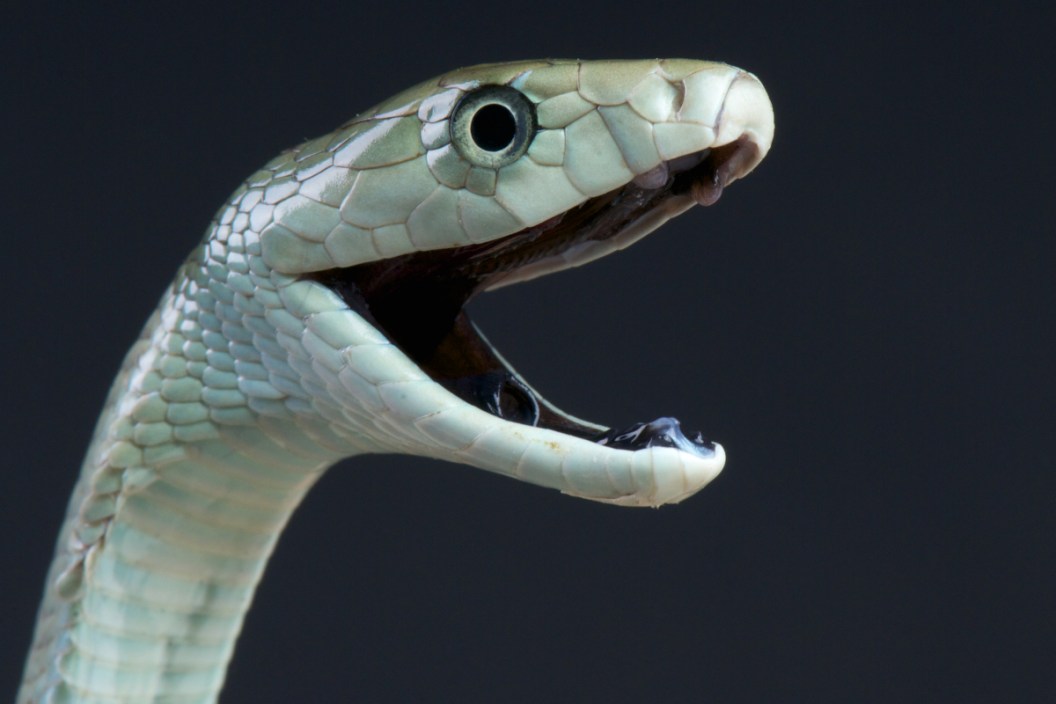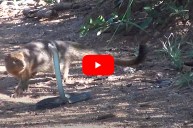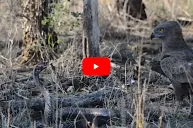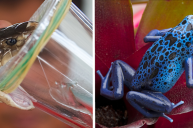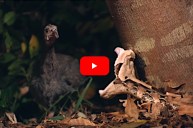The black mamba is one of the world's most feared snakes.
Many people are fearful of mistakes, but few have struck fear in the hearts of humans quite like the legendary black mamba (Dendroaspis polylepis). Native to Africa, this species is one of the world's deadliest snakes thanks to the potent venom. Snakebites that aren't treated with antivenom are frequently fatal in humans.
As you might expect with any snake species with this kind of reputation, many rumors and myths have sprung up about the black mamba.
Today we will attempt to separate some of the fact from fiction about this famous and dangerous snake.
The Black Mamba

The appearance of the black mamba is nothing fascinating to write home about. These reptiles have an almost universally dark brown or grey appearance. The belly tends to be lighter in coloration, more of a light grey or off white. The body of the snake is slender with a pronounced head. The inside of the mouth usually has a dark black appearance which is probably where the animal got its iconic name. Young snakes have a lighter overall appearance and may appear yellow or even green before dulling with maturity.
The eyes of the black mamba can throw some people off. There is a preconceived notion that all venomous snakes have cat-like vertical slit pupils like most vipers do. The black mamba's pupils are rounded like many non-venomous snakes, proving that one cannot determine how dangerous a snake is based off this factor alone. Another interesting feature of this snake is the neck-flap. It is not as pronounced as the flaps found on more venomous creatures like the king cobra, but this snake does use it as a sign of aggression.
One thing that helps make this species of snake recognizable is the size. This is the longest venomous snake on earth. The official Kruger National Park website notes that the current world record was found in Zambabwe and reached a stunning 4.4 meters or 14.4 feet in length. Fortunately for anyone with a fear of serpents, most do not reach this stunning size. However, the average snake is no slouch either. It's not uncommon to encounter black mambas over six or seven feet in length.
Distribution, habitat, and behavior
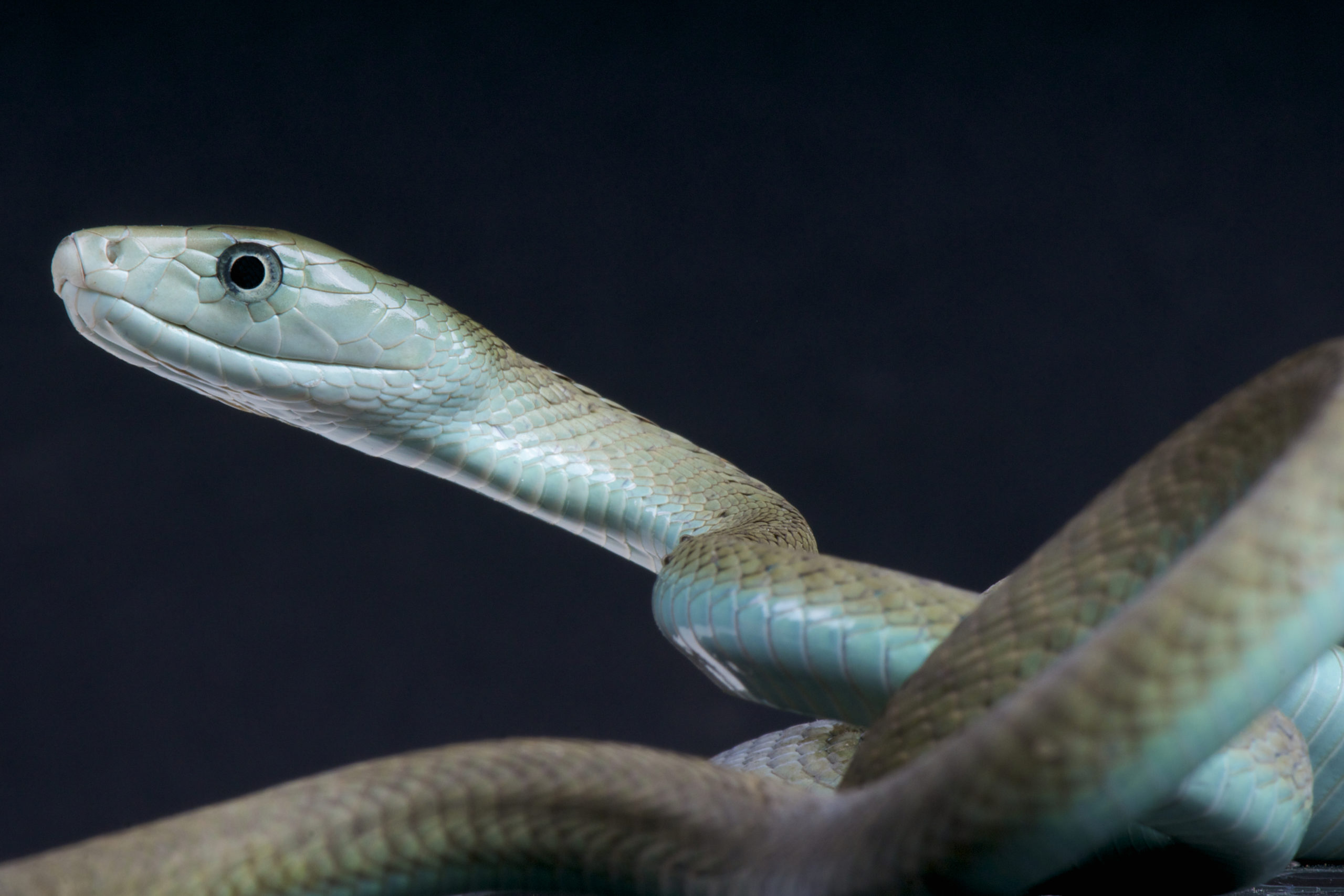
The black mamba is distributed mostly through the sub-Saharan portions of Africa. Although it is probably most common in Southern Africa and East Africa. The reptile calls Mozambique, Namibia, Zambia, Congo, South Africa, Botswana, and many others home. They do tend to prefer the slightly more arid areas, but this snake can be found in a variety of habitats, putting it in potential conflicts with humans. During the day, it is not uncommon to see them up in trees where they like to spend time basking in the sun's rays. However, this is not strictly a tree-dwelling snake. It's not uncommon to find them on the ground crossing the savannahs, especially when they are moving back and forth between their nighttime hiding spots.
Black mambas like nothing more than to curl up in a nice hollow tree, termite mound or rock crevices. If you're visiting the Dark Continent, watch where you put your hands as you're exploring the rocky hills common to Sub-Saharan Africa! Despite the fearsome reputation, this species targets mostly birds and small mammals as its primary food sources.
Something that has probably added to the mamba's undeserved bad reputation is their speed. This is one of the fastest snakes on earth and many people are taken off guard by how fast they can move. Most experts say the black mamba is only dangerous once it gets cornered. This species has a reputation for putting on an exaggerated threat display. It will often raise its head and part of its body far off the ground to look larger and intimidate predators. This behavior, when paired with the flaring of that neck flap we mentioned earlier, probably helped give rise to some of the urban legends that mambas can stand up fully on the tips of their tails (they cannot).
That legendary venom.
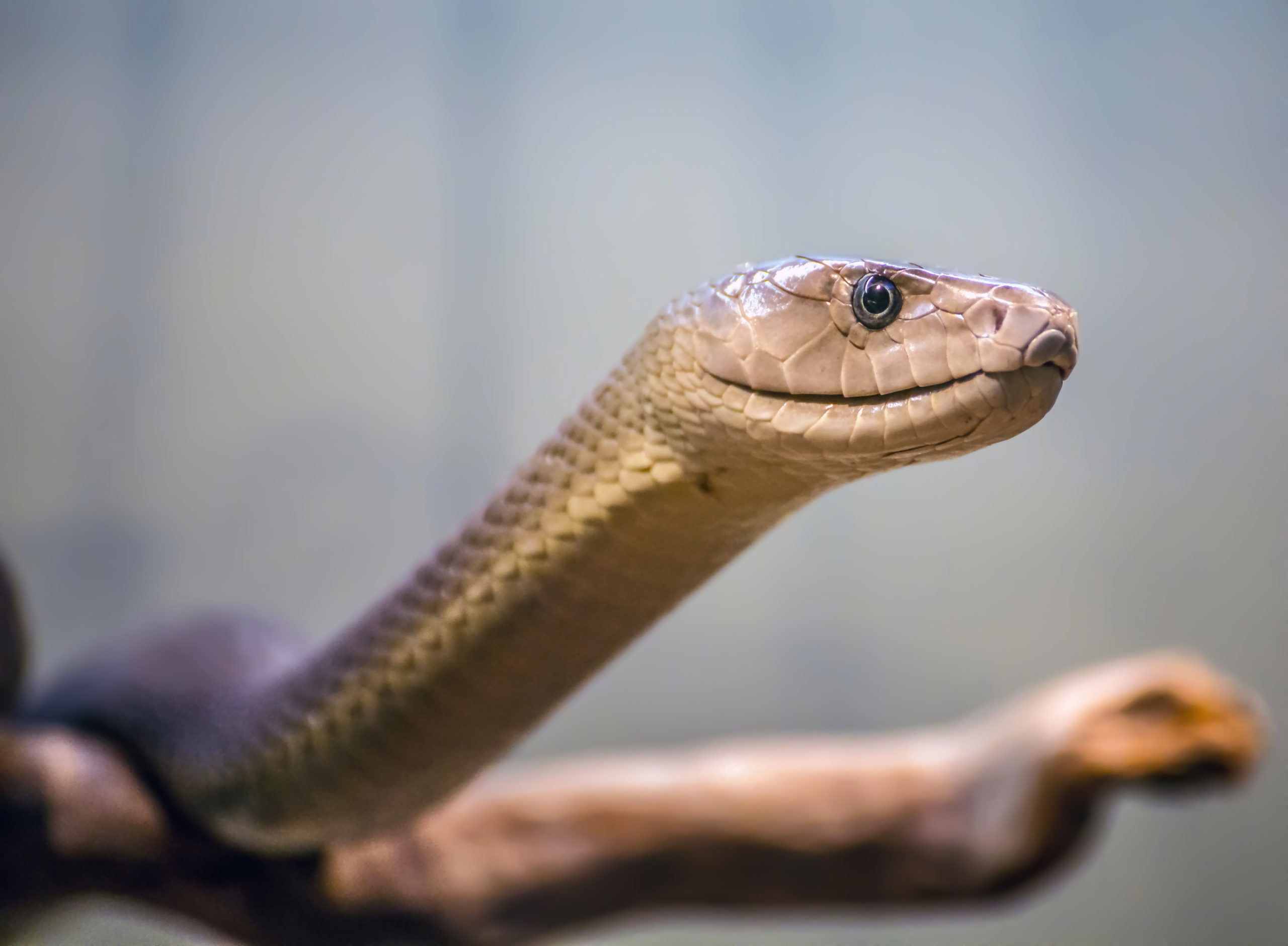
Black mamba venom is some of the most dangerous ever thanks to a combination of cardio toxins and neurotoxins. According to Kruger National Park's information page, just two drops of the stuff can kill a human being. One of the things that makes black mamba bites so dangerous is the fact that the snake will often strike more than once, delivering multiple loads of venom that attack a person's nervous system and heart. Obviously, people with respiratory or heart issues are going to be at greater danger from this snake's bites than others.
People who get bitten by this snake are advised to immediately seek out the nearest hospital or first-aid if professional medical care is not available. Antivenin is available to combat the bite of a black mamba, but many fatal bites occur because the bites happen in remote areas of access where access to medical care may not be easily available. Use caution when exploring the wild areas of west and eastern Africa.
Antivenom does improve the chances of survival, but people have still died even after receiving a dose. Other people have survived black mamba bites without ever receiving antivenom. The effects of the venom vary from person to person based on their health and how many times they were bitten.
Aside from the danger of death, the neurotoxic properties of black mamba bites often bring a whole host of other nasty symptoms that most people would prefer to avoid. In some victims the venom may cause blurred vision, difficulty swallowing, a loss of basic motor and speech functions, vomiting, nausea, sweating, breathing problems, and even diarrhea. Victims who have survived the serpent's bite often describe burning and swelling around the area where the snake struck.
The good news is that bites from this species are rare and can usually be avoided simply by leaving the snake alone. As seems to be the case with most species, most of the bites seem to happen when someone is trying to handle or kill the snake. If you do happen to encounter this snake during a west Africa adventure, we recommend keeping your distance and just enjoying one of nature's most venomous creatures from afar!
For more outdoor content from Travis Smola, be sure to follow him on Twitter and check out his Geocaching and Outdoors with Travis YouTube channels.
NEXT: THE AXIS DEER AND HOW THEY'RE IMPACTING PARTS OF THE UNITED STATES
WATCH
